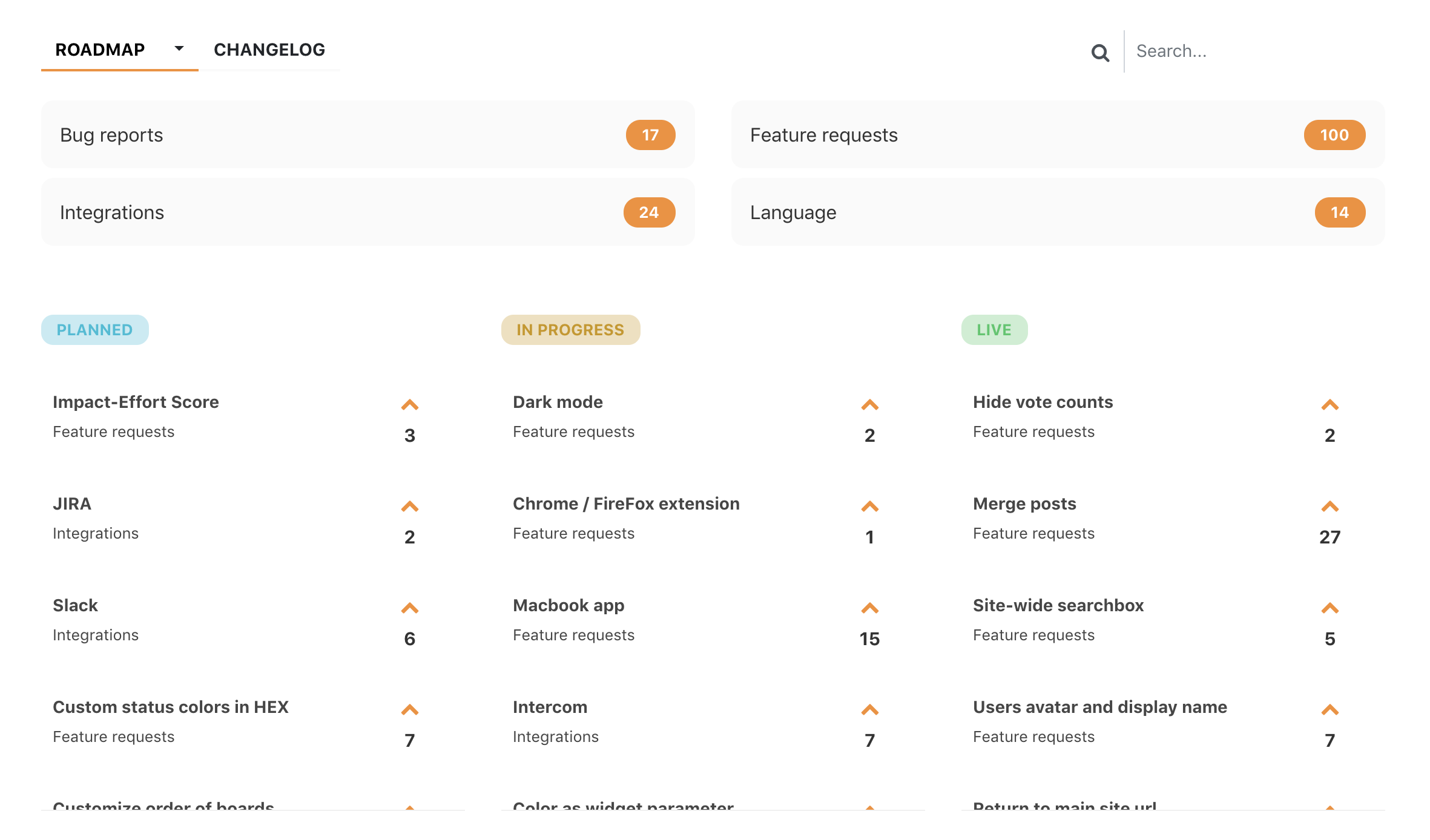How to Say No to Your Customers Without Losing Them
You’re finally there! You just closed a big sale for an enterprise package and you’re ready to onboard your new customer. You’ve talked to your team, and everyone is excited to help the new customer achieve her results by using your software…And then all of a sudden, you receive an email from your new client, asking you to make a “small change” to your product.Obviously, this “small change” can be something minor, like updating the color palette. But it can also be something more monumental, like adding a new, sophisticated feature.What do you do, then?The right thing is to say “No,” and you know it. After all, accommodating a request like this can be time-consuming and cause a great deal of stress. But on the other hand, what if saying no causes you to lose your customer?Should you just give in to all of your buyers’ requests, and if not, how should you say no without losing them? That’s something we’ll be exploring in this article.
Customer requests you’ll want to ignore
You should always pay attention to your customer requests and feedback, no matter what. However, in some cases, customers will be asking you for some unreasonable things. Here are some of them:
Here are some of them:
Request #1. Create a new feature to solve a specific need
Imagine that you developed a content distribution platform and someone asks you to add a feature that will help them automatically translate their copy.There’s nothing wrong with adding a few new features; after all, your product is a living creature that constantly needs to grow, but not when someone demands a new feature only because he or she wants to overcome a specific issue. This is why you have a product roadmap.
Request #2. Have a tailor-made approach
Every customer has different preferences, so they may expect you’ll be customizing your product to fit their needs. Let say you’ve built some webinar software and your customer is asking you to change the design of the live polls. Regardless of how much you care about your buyers, you can’t just tailor your product features every time one person asks you to.
Request #3. Design a new product for their company
In some cases, your customer may not be even aware of the magnitude of their request. They may think they’re asking for something small, yet in reality, they’re asking for a totally different product than you’ve already developed.
Request #4. Do the work for them
Let’s say you’ve created an event management platform that lets people digitize the planning logistics. It’s a wonderful tool that will help people plan and run their events. Yet there’s someone waiting for you to do the work for them, meaning upload the event data and set up the platform according to their needs. That’s not something you will want to (or should) do.
The problem with always saying “Yes” to your customers
Although the fear of losing your customers is strong and you want to oblige every single request, doing so means that you risk slowing down your business. You’ll end up loading your team with urgent, yet unnecessary work. Instead of following the product roadmap and focusing on developing features that will increase the value of your software, your developers will have to race against the clock to add a new feature or customization for every single customer.A clear product roadmap gives you a vision of what your software should look like. Making changes simply to comply with your customers’ requests isn’t wise, to say the least, because you’ll end up distancing yourself from your vision.In addition, creating new features or doing the work for your customers takes away time that you can invest in nurturing the relationship with other buyers who need smaller, yet more reasonable and understandable changes.Saying “Yes” to your customers feels good.After all, you hate letting them down. Plus, you don’t want to worry that they’ll decide to take their business elsewhere or write a bad review of your product. But always trying to give your customers everything they want at no matter the cost will only lead to a negative ROI and slow down your business. That’s why you have to say no to your customers sometimes.
Instead of following the product roadmap and focusing on developing features that will increase the value of your software, your developers will have to race against the clock to add a new feature or customization for every single customer.A clear product roadmap gives you a vision of what your software should look like. Making changes simply to comply with your customers’ requests isn’t wise, to say the least, because you’ll end up distancing yourself from your vision.In addition, creating new features or doing the work for your customers takes away time that you can invest in nurturing the relationship with other buyers who need smaller, yet more reasonable and understandable changes.Saying “Yes” to your customers feels good.After all, you hate letting them down. Plus, you don’t want to worry that they’ll decide to take their business elsewhere or write a bad review of your product. But always trying to give your customers everything they want at no matter the cost will only lead to a negative ROI and slow down your business. That’s why you have to say no to your customers sometimes.
How to say “No” to your customers the RIGHT way
Tip #1. Communicate your rules clearly
Start by identifying the things your team can or can’t do. Consult your developers and engineers and get them to walk you through their process. Ask them how much time they need for different tasks, and find out what small adjustments they can make without disrupting their workflow too much.Then, write down a quick statement regarding your product vision, roadmap, and requests you won’t accept from your customers. Every time you receive an email asking you to do the impossible, feel free to send a polite reply, indicating the terms of use.This lets people know that, although you really want to help them, you can’t disobey the company rules. Receiving formal and well-defined emails feel much less offensive than a straight-up “No, sorry.” In most cases, people will just forget their request and go with your rules.One more thing to remember is that people who’re opting in for your “ready-to-go” option (such as the basic pricing plan) won’t have the same amount or type of requests as those who chose the “enterprise plan.”So when you’re getting ready to close a deal with a bigger client, don’t forget to communicate your company's rules and values. This will save you from future headaches and give you the legal right to turn down unreasonable requests.
Tip #2. Explain your “No”
In the event that you didn’t establish any product development rules or terms of use, yet you still have to deny a customer request, always be polite and explain why it’s not possible.For example, you can tell your customer that this type of request is not part of your product roadmap. You can also indicate that a product update or platform customization is impossible at the moment because you have to prioritize other customers’ requests first. Always be respectful and include a detailed explanation.
Tip #3. Provide an alternative solution to their problem
When receiving a request from your customer, always ask about the issue they’re trying to solve. Chances are you can do it without making major changes to your product. If there’s nothing you can do, however, you can still search for additional solutions or provide small product adjustments as an alternative. Your customer will see that you’re proactive in your attempt to help them, which will strengthen their trust in your brand.
Tip #4. Empathize with and mirror your customers
The way you say no has the biggest impact on your customers’ overall experience. Voice and tone matter. When a customer is sending a request or expressing his or her issue, employ a positive and reassuring tone.Remain polite and professional, and don’t dismiss their concerns. Also, make sure to mirror their tone. If your customer gets upset that you turned their request down, it’s inappropriate to be over the top with jokes and witty humor. Mirror their concerns and show your empathy. This will help you soothe the impact of your “No.”
Tip #5. Invite your customers to make a product roadmap suggestion
Finally, when denying a request, always empower your customers by offering them the possibility of taking action. Encourage them to provide their feedback, via the Upvoty product feedback tool for example, and make a suggestion regarding the product updates they want to see in the future. This shows your customers that you’re taking their request into consideration and involving them in the process of improving your product. This will make them feel much better, even if you’ve denied their request.
This shows your customers that you’re taking their request into consideration and involving them in the process of improving your product. This will make them feel much better, even if you’ve denied their request.
Key takeaway
Customers aren’t always right. Sometimes their requests can be outlandish and totally unreasonable. However, make sure you always treat all customers with respect no matter what the request and show them that you value their opinion and insights.If you come from a place of honesty and truly listen to your customers’ needs and engage in meaningful conversations with them, you’ll not only reinforce your relationship with them but also increase the trustworthiness of your brand and reduce the churn rate.So the next time you’re about to give in to an unreasonable request, remember that you can deny it the RIGHT way and still keep your customer.

